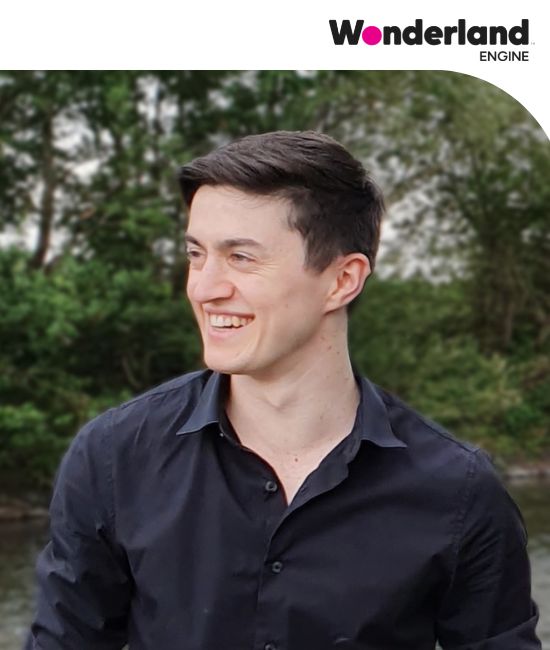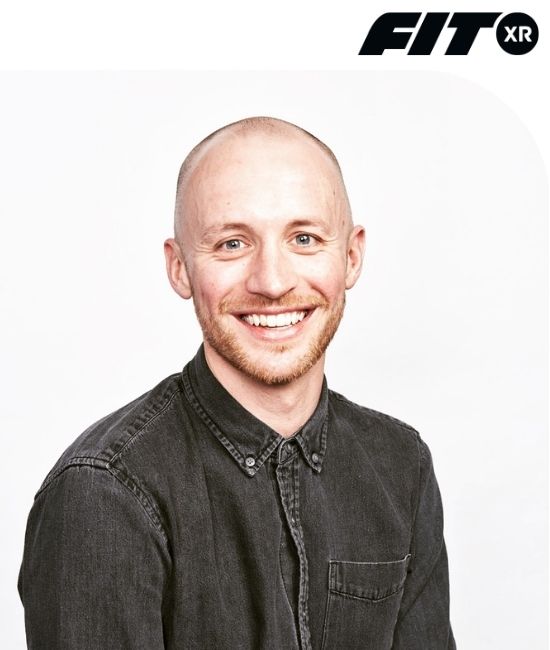11:00 - 17:30
Description
Join us in the Expo Hall and Playground areas to meet sponsors and exhibitors, discover the latest AR/VR tech, check out the newest start-ups, make connections, and more.
10:00 - 15:00
Description
Join us in the Expo Hall and Playground areas to meet sponsors and exhibitors, discover the latest AR/VR tech, check out the newest start-ups, make connections, and more.
18:30 - 21:30
Description
Join us at the official AWE After Party at Stage 3 for a fantastic opportunity to network and hang out with others from the AWE community!
One way shuttles will be provided from ACV at 18:00 to the venue:
Otto Preminger Straße 3
1030 Vienna
Open to all AWE participants with an AWE badge.
10:05 - 10:30
Description
WebXR offers advantages over native. What if we could just put a native Meta Quest 2 game on the web and gain those advantages? It would not perform well--or would it? Come visit our talk to answer all these questions and many more. WebXR is ready. We will show you.
Speakers


17:35 - 18:00
Description
Deutsche Telekom has been using Virtualspeech VR training for years across Europe. This talk will provide the results of key findings as together they navigated introducing VR training to a global organisation. The discussion will cover planning, implementation, challenges, and results, as well as a look into the future of Enterprise training at scale.
Speakers


14:00 - 14:25
Description
With the use of a standard phone and a 3D scan of a location, you can determine your position with an impressive accuracy of 5cm - a game changer for AR. This technology opens doors to a variety of features including AR indoor navigation, AR workflows, and even remote assistance across large facilities. Spatial applications will make AR a tool for daily use, creating massive ROI for businesses. This talk will show how to use AR for daily operations and ultimately how to increase your ROI.
Speakers

12:30 - 12:55
Description
Dispelix develops and delivers lightweight, high-performance see-through waveguide combiners that are used as transparent displays in extended reality (XR) devices. Our full-color near-eye displays encompass all dimensions of XR comfort - social, wearable, and visual alike – in a simple eyeglass-lens form. Rich and pleasant XR experience calls for seamless merger of display and light engine technologies. In her presentation, Dispelix Vice President Pia Harju discusses how advanced design contributes to XR comfort and same time helps draw full potential from the light engine and display. We will showcase how built-in mechanical and optical compatibility fuse esthetic and functional aspects of design, paving the way for mind-altering XR eyewear experience.
Speakers

15:10 - 15:35
Description
Collaboration between creative technologists, film, TV, game, and creative arts is an ever evolving indie scene but as the industry grows so do the players and corporations in this space. With the inevitable development of 3D worlds, Web3, AI eventually being part of a global future, this talk will openly discuss the production and skills required for the evolution of emergent technology storyworld entertainment.
Speakers

14:35 - 15:00
Description
Discover how mixed reality (MR) is being used to enhance the training of medical first responders for challenging contexts. Medical first responders are confronted with an increasing number of mass-casualty incidents with many injured people that include include:
• Proper evaluation of the situation itself
• Checking and monitoring the vital status of a large number of victims
• Choosing the most appropriate strategy to further proceed with treatments are particular challenges
In the H2020 project MED1stMR, an innovative mixed reality (MR) training technology is developed that combines real-world patient simulation manikins with virtual environments to train medical first responders for these challenging situations. Through the integration of high-fidelity patient simulation manikins and the medical equipment into the MR experience, a much richer sensory experience is offered, allowing trainees to immerse into virtual scenarios and be able to feel and perceive vital signs and actual movements of the limbs, head, and face through tactile and visual interaction as they are actuated.
This brings virtual training closer to reality and enable both scenario training and medical training in the same MR training environment. Furthermore, it enables systematic manipulation of a large set of potential influence factors to optimize training effects.
The realization of a bio signal feedback loop with body sensors allows for monitoring trainees' stress and behavior during training and will make this data available for scenario control. The trainer can adapt training to the personal needs of trainees and provides a new way of interaction between the trainer and trainee.
This is sure to be a beneficial session for all those in healthcare fields so join us and be prepared to ask any questions you might have.
Speakers


17:05 - 17:30
Description
Tibor Mérey from BCG X and Tina Werro from Swisscom share their experiences on where we currently stand on our journey into an augmented human experience, which elements of the Metaverse flywheel are picking up speed currently, and what we can learn from Swisscom’s own journey as well as the 150+ other companies BCG X supported in order to reap outsized returns in this new world.
Speakers


15:40 - 16:10
Description
Two finalists from the $100,000 XR Prize Competition join us on stage to discuss their projects. Both Oleg Gubar and Reedah El-Saie have created immersive games that educate and encourage more sustainable behaviors, particularly in children when the behaviors can more easily become habit.
Join us on the main stage as Oleg and Reedah each have an opportunity to present an overview of the project that earned them a finalist spot in the XR Prize Competition at AWE USA 2023.
Speakers


13:30 - 13:55
Description
Join us for a deep dive into the VR/AR sector's core challenges, sourced directly from industry professionals. This session aims to arm attendees with actionable insights, strategies, and success stories to navigate these hurdles effectively. Discover the transformative power of community-driven knowledge-sharing and leave inspired to take on the challenges that lie ahead. This isn't just another talk; it's a guide to elevating your XR journey.
Speakers

13:00 - 13:25
Description
Realistic avatars are fundamental to VR experiences. Avatar SDK leads the way in creating lifelike avatars from selfies. In this discussion, we'll delve into the state of the art and the challenges associated with creating recognizable avatars. Topics will include avatar customization, the uncanny valley, and methods for measuring avatar likeness, as well as the implications of deep fakes.
Speakers

15:30 - 15:55
Description
We are currently experiencing a shift from siloed applications and technologies towards new forms of realities. Realities that change human life through technology. Many of these technologies have been on the market for a considerable time. Now these technologies, industries, countries, and humans become deeply intertwined. We are living in a period of profound convergence with unprecedented possibilities. For the better and the worse.
While companies are seemingly fast-tracking humanity into their envisioned futures, the legal systems are struggling. Many people wonder: can the legal systems keep pace? We believe they can and we'll show you how.
Speakers

14:00 - 14:25
Description
This fireside chat will explore the past, present and future of VR fitness, its problems and opportunities. We will discuss:
• How did VR fitness become a stable market with a strong following, high user retention and a fast-growing developer community?
• How do VR and VR fitness improve health and mobility, and how can they be used for injury recovery and rehabilitation?
• What are the new trends in VR hardware and how can developers and users benefit from them?
• What are the new opportunities in enterprise markets?
Speakers


11:05 - 11:30
Description
The presentation "Scaling VR Simulation Production in the Oil & Gas Industry" explores the rapidly expanding application of virtual reality (VR) in the energy sector. Particular focus will be on Linde, a leading global industrial gases and engineering company, that has been at the forefront of utilising VR technology to enhance their training and operations.
This case study will explore how Linde has successfully scaled their VR simulation production, the challenges they've encountered, the solutions they've implemented, and the impacts on their operational efficiency and safety performance. We will examine the strategies Linde used in building their Virtual Academy, the key learnings from their journey, and how these insights could be applied across the Oil & Gas industry in the face of increasing operational complexity and safety challenges.
We will discuss the opportunities and challenges associated with the large-scale production of VR simulations and we will explore the current state of VR technology, its potential for creating safer and more effective training programs, and the barriers to its wide adoption. We'll also delve into the production of VR simulations, discussing scalability strategies, cost optimisation, and quality control, as well as highlighting successful case studies from the field.
Attendees can look forward to a comprehensive understanding of how to design, produce, and deploy VR simulations at scale, as well as insights on addressing the unique demands of the Oil & Gas industry.
This presentation is ideal for industry professionals, VR solution developers, and educators interested in leveraging cutting-edge technology for practical and high-impact applications in the energy sector.
Speakers


14:30 - 14:55
Description
Web browsing through XR enables users to navigate and interact with traditional web-based content as well as immersive Web XR experiences. This session will explore the technical challenges and design opportunities of creating a Web browser designed specifically for XR devices.
Join us as we discuss the building of Wolvic, a multiplatform and open source Web browser for XR. Attendees are encouraged to engage in the presentation, ask questions, and join the project of this web browsing project for XR.
Speakers

16:35 - 17:00
Holographic Collaboration: How a Volumetric Video Cloud Can Help with Employee Training & Onboarding
Description
By replacing avatars with authentic humans, you can truly experience holographic collaboration. It enables deeper personal connections and trust building, specially for greater impact and engagement in employee training and onboarding. We discuss how a volumetric video cloud can help solving scalability and interoperability challenges of live volumetric video, for holograms are only as powerful as their flexibility and accessibility to be consumed on your PC, smartphone, or XR device. Real people, virtually anywhere.
Speakers

